 W
WMicropterigoidea is the superfamily of "mandibulate archaic moths", all placed in the single family Micropterigidae, containing currently about twenty living genera. They are considered the most primitive extant lineage of lepidoptera. The name comes from the Greek for mikros, little and pterux, a wing. The fossil record of the group goes back to the middle-late Jurassic with the earliest known species being Auliepterix from the Karabastau Formation in Kazakhstan.
 W
WBaltimartyria is an extinct genus of primitive metallic moths in the family Micropterigidae. The genus is solely known from the Early Eocene Baltic amber deposits in the Baltic Sea region of Europe. The genus currently contains two described species, Baltimartyria proavitella and Baltimartyria rasnitsyni.
 W
WEpimartyria is a genus of small primitive metallic moths in the family Micropterigidae.
 W
WEpimartyria auricrinella is a species of moth belonging to the family Micropterigidae. It was described by Lord Walsingham. It is known from the eastern parts of the United States as well as south-eastern Canada.
 W
WEpimartyria bimaculella is a species of moth belonging to the family Micropterigidae. It was described by Davis and Landry in 2012. It is found in north-western Washington and southern British Columbia.
 W
WEpimartyria pardella is a species of moth belonging to the Micropterigidae family. It was described by Walsingham, Lord Thomas de Grey, in 1880. Its wingspan is 10–11 mm with a metallic brown forewing featuring three distinctive gold spots. Adults are on wing from early May to mid July and are day active. The larvae feed on liverworts, including Conocephalum conicum and Pellia species and take about two years to fully develop.
 W
WMicropardalis is a genus of small primitive metallic moths in the family Micropterigidae. The genus was previously treated as a subgenus of Sabatinca.
 W
WMicropardalis aurella is a moth of the family Micropterigidae. This species was described by George Hudson in 1918. It is endemic to New Zealand. A "pale shining golden" species, these moths have a forewing length of between 4.2 and 5.2mm.
 W
WMicropardalis doroxena is a species of moth belonging to the family Micropterigidae. It was described by Edward Meyrick in 1888. It is endemic to the North Island of New Zealand.
 W
WMicropterix is a genus of small primitive metallic moths, in the insect order lepidoptera within the family Micropterigidae. The name was raised by the German entomologist, Jacob Hübner in 1825 and comes from the Greek for mikros, little and pterux, a wing. The moths are distributed across Europe, south to North Africa and east as far as Japan.
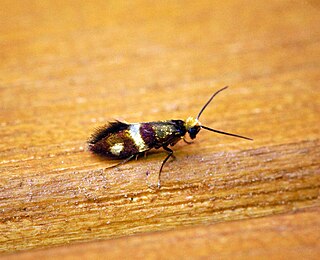 W
WMicropterix aglaella is a species of moth belonging to the family Micropterigidae.It is found in southern France, south-western Switzerland and northern Italy.
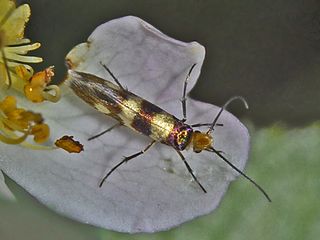 W
WMicropterix allionella is a moth of the family Micropterigidae. It was described by Johan Christian Fabricius in 1794.
 W
WMicropterix aruncella is a species of moth belonging to the family Micropterigidae. This is one of the best known members of the family, being found in a wide range of habitats from sea level to over 2,000 metres (6,600 ft). The only habitat not favoured by this species is dense woodland. It is distributed throughout Europe except the Iberian Peninsula.
 W
WMicropterix aureatella is a moth of the family Micropterigidae. It is found in the Palearctic realm, except North Africa.
 W
WMicropterix aureoviridella is a moth of the family Micropterigidae. It is found in Italy, Switzerland, Germany, Austria, Poland, Slovenia and Slovakia.
 W
WMicropterix calthella, the marsh marigold moth, is a species of moth belonging to the family Micropterigidae. It is found in damp habitats throughout Europe and is also distributed eastwards to central Siberia. It was described by Carl Linnaeus in 1761 as Phalaena calthella.
 W
WMicropterix cornuella is a species of moth belonging to the family Micropterigidae. It was described by Lees, Rougerie, Zeller & Kristensen in 2010. It is only known from the type locality in northern India.
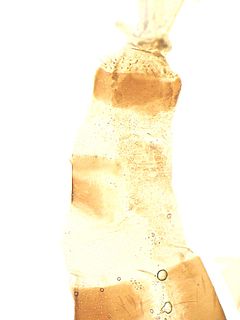 W
WMicropterix garganoensis is a species of moth belonging to the family Micropterigidae. It was described by Heath in 1960. It is known from Italy. (Gargano)
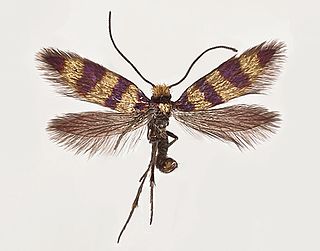 W
WMicropterix gaudiella is a species of moth belonging to the family Micropterigidae. It was described by Zeller and Huemer in 2015. It is only known from the mountain Pizzo Arera in Lombardy (Italy) from an elevation of about 1,600 meters. The habitat consists of southern exposed slopes on limestone.
 W
WMicropterix igaloensis is a species of moth belonging to the family Micropterigidae. It was described by Hans Georg Amsel in 1951 and is only known from Montenegro.
 W
WMicropterix mansuetella is a species of moth belonging to the family Micropterigidae and can be found in Europe, in very wet woodlands, fens and carrs. The moth was described by Philipp Christoph Zeller in 1844, but the larva and pupa are poorly described.
 W
WMicropterix osthelderi is a species of moth belonging to the family Micropterigidae. It was described by Heath in 1975. It is known from Italy, Germany, Switzerland, Austria, Poland, the Czech Republic and Denmark.
 W
WMicropterix rothenbachii is a species of moth belonging to the family Micropterigidae that was described by Heinrich Frey in 1856. It is known from Italy, Sicily, Austria, France, Switzerland, Germany, Croatia and Slovenia.
 W
WMicropterix schaefferi is a species of moth belonging to the family Micropterigidae that was described by John Heath in 1975. Male Micropterix schaefferi have a wingspan of 3.8–5.1 millimetres (0.15–0.20 in), while females have a wingspan of 4.7–5.8 millimetres (0.19–0.23 in). It is known from France, Corsica, Italy, Belgium, the Netherlands, Germany, Switzerland, Austria, Hungary, Czech Republic, Bulgaria, Denmark, and Poland. Moths in this species inhabit woodlands with many beech and coniferous trees, and are also known to inhabit moist ravine forests and dry pine forests.
 W
WMicropterix tunbergella is a moth of the family Micropterigidae found in most of Europe. The moths are very small and can be found feeding on the pollen of hawthorn, oak and sycamore. The larva and pupa are unknown. The moth was described Johan Christian Fabricius in 1787.
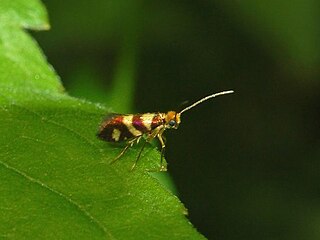 W
WMicropterix tuscaniensis is a species of moth belonging to the family Micropterigidae. It was described by John Heath in 1960. It is only known from central and southern Italy, where it has been found in the provinces of Tuscany, Calabria, Apulia and Basilicata. However, it is probably distributed throughout the whole of mainland Italy, except for the Alps.
 W
WSabatinca is a genus of small primitive metallic moths in the family Micropterigidae. Palaeomicra and Micropardalis were both established as subgenera of Sabatinca, but were both raised to generic level by Joël Minet in 1985. Extinct species are known from the Cretaceous Burmese amber.
 W
WSabatinca chalcophanes is a moth of the family Micropterigidae. This species is endemic to New Zealand.
 W
WSabatinca demissa is a species of moth belonging to the family Micropterigidae. It was described by Alfred Philpott in 1923 and is endemic to New Zealand. The current species doesn't have a long-distance pheromone communication system.
 W
WSabatinca incongruella is a moth of the family Micropterigidae. It is endemic to New Zealand.
 W
WSabatinca lucilia is a moth of the family Micropterigidae that is endemic to New Zealand.
 W
WZealandopterix is a genus of small primitive metallic moths in the family Micropterigidae.
 W
WZealandopterix zonodoxa is a moth of the family Micropterigidae. It is found in northern New Zealand.